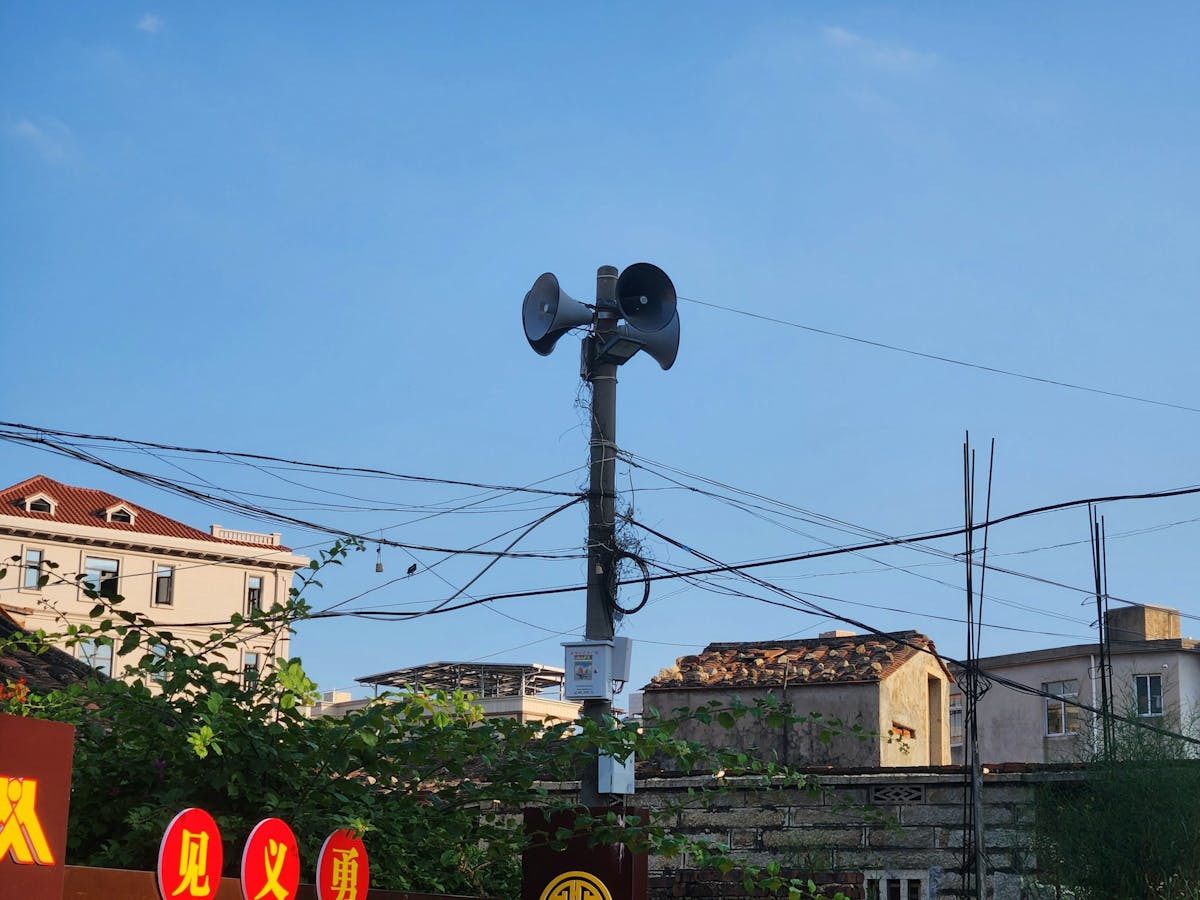Creating an Effective Workplace Emergency Action Plan for Natural Disasters


An Emergency Action Plan (EAP) is a fundamental component of workplace safety policies for natural disasters. It serves as your team's lifeline during emergencies. A well-crafted EAP provides your non-desk employees with clear direction when earthquakes, floods, tornadoes, or other environmental emergencies strike.
During such situations, confusion can lead to poor decision-making, especially in physically demanding work environments. Having a structured plan ensures everyone knows exactly what to do, reducing the risk of injuries and property damage.
What Are Emergency Action Plans (EAPs)?
Emergency Action Plans (EAPs) are formal documents that outline specific procedures to follow during workplace emergencies, particularly natural disasters and other crisis situations. These plans serve as detailed road maps that guide employees through emergency situations, providing clear instructions on evacuation routes, reporting procedures, and response protocols.
EAPs play a significant role in workplace safety policies for natural disasters by establishing structured frameworks that help organizations respond effectively to emergencies. For non-desk employees who often work in physically demanding or hazardous environments, these plans are especially important as they may face increased risks during natural disasters or facility emergencies.
The fundamental purpose of an EAP is to protect human life by minimizing injury risks during chaotic situations. When a crisis occurs, people naturally experience stress and confusion, which can lead to poor decision-making.
A well-designed EAP cuts through this chaos by providing predetermined actions and responsibilities, allowing employees to respond promptly and appropriately rather than panicking or making dangerous choices.
Beyond protecting lives, these plans also help reduce property damage and ensure businesses can recover more quickly after emergencies. For organizations with frontline workers, having clear emergency procedures is not just a regulatory requirement—it's an essential safeguard that demonstrates commitment to employee welfare while preparing for the unexpected.
Regulatory Compliance with OSHA
OSHA standard 1910.38 governs Emergency Action Plans (EAPs) and mandates specific elements that must be included. As an employer, you're legally required to have a comprehensive EAP that meets these standards to ensure workplace safety and avoid penalties.
The minimum required components for an OSHA-compliant EAP include:
- Procedures for reporting fires and other emergencies
- Evacuation procedures and designated escape routes
- Guidelines for employees who must remain to operate critical functions
- Methods to account for all employees after evacuation
- Procedures for employees performing rescue and medical duties
- Names or job titles of contacts for emergency information
If you have ten or fewer employees, you're exempt from creating a written plan, but you still must ensure all employees understand emergency procedures. For larger organizations, a written plan is mandatory.
Non-compliance with OSHA standards can result in various violations and penalties, ranging from de minimis violations (no direct safety impact) to willful violations, which can incur significant fines. In cases where willful violations result in employee death, penalties may include fines up to $500,000 for organizations or imprisonment for up to six months.
To ensure compliance, utilize OSHA's assistance resources including their EAP Development Guide, publications, and e-Tools. OSHA also offers consultation services for small and medium-sized businesses that provide free, confidential safety advice without resulting in penalties or citations.
Step-by-Step Framework for Developing an EAP
Developing a comprehensive Emergency Action Plan (EAP) is necessary for workplace safety policies during natural disasters. It requires a structured approach that addresses all potential hazards in your workplace. Below are the main steps to create an effective plan that ensures everyone's safety during emergency situations.
Conduct a Comprehensive Risk Assessment
Start by identifying all potential emergencies that could affect your workplace. Consider both:
- External threats: Earthquakes, severe weather events, external explosions, and hazardous substance releases from nearby facilities
- Internal threats: Fires, medical emergencies, workplace violence, and internal hazardous material incidents
Involve employees in this assessment process as they often have valuable insights about workplace-specific hazards that management might overlook. Their participation also increases their commitment to emergency preparedness and improves response effectiveness during actual emergencies.
Establish a Clear Chain of Command
A well-defined chain of command is necessary for managing emergencies effectively. Your EAP should:
- Designate an emergency response coordinator and at least one backup coordinator
- Establish an Incident Commander position with overall responsibility for emergency management
- Clearly define roles and responsibilities for all team members involved in emergency response
- Ensure all employees know who the designated emergency coordinators are
This command structure creates an organized link between the person with overall emergency management responsibility and those responsible for specific response tasks. Regular training and drills reinforce this hierarchy, ensuring employees understand their roles and can act quickly during real emergencies.
Develop Evacuation Routes and Plans
Your EAP should include detailed evacuation procedures tailored to different types of emergencies. Consider these four evacuation types:
- Stay in Place: For situations when it's safer to remain indoors (severe weather, external chemical spills)
- Building Evacuation: Complete evacuation to designated assembly points outside the building
- Campus Evacuation: Movement to assembly areas away from the entire campus, requiring coordination with campus security and local emergency response workers
- City Evacuation: Large-scale evacuation following authorities' instructions on evacuation routes and shelters
For each type, identify safe assembly areas that are:
- A sufficient distance from the building
- Away from potential hazards
- Accessible and able to accommodate all employees
Create Practical Checklists and Templates
Develop easy-to-follow checklists and templates for various components of your EAP:
- Personnel accountability procedures to confirm everyone has safely evacuated
- Communication protocols using public address systems, two-way radios, or mass notification systems
- Building-specific information including locations of fire alarms, emergency exits, fire extinguishers, and first aid kits
- Assignment of specific roles such as Incident Commander, Safety Officer, and Operations Chief under the Incident Command System (ICS)
Review your plan with all employees, conduct regular practice drills, and ensure everyone can access the plan when needed. Update checklists as new risks emerge and reinforce emergency procedures through ongoing training sessions.
Employee Involvement and Communication Strategies
Involving employees in the development of your Emergency Action Plan improves workplace safety policies for natural disasters. When employees help build the EAP, they take ownership of the procedures and are more likely to follow them during real emergencies.
This is especially important when engaging non-desk workers, who may not have regular access to company communications.
Creating Employee Buy-in
To boost employee engagement and promote civility in the workplace, try these practices:
- Form a cross-functional safety committee with representatives from different departments to ensure diverse perspectives in safety planning.
- Conduct regular surveys to gather feedback on safety concerns and suggestions, making employees feel heard and valued.
- Involve employees in risk assessments to identify potential hazards specific to their work areas, leading to more accurate safety measures.
- Share draft plans for comment before finalization, allowing employees to provide input and take ownership of safety protocols.
Encouraging open dialogue and recognizing employee contributions strengthens commitment to workplace safety and creates a culture of accountability.
Maintaining Open Communication Channels
Effective emergency preparedness needs ongoing dialogue. Try these communication methods:
- Schedule quarterly EAP review meetings with key stakeholders to evaluate and refine emergency response strategies.
- Create dedicated communication boards in high-visibility areas to keep employees informed about emergency procedures and updates.
- Establish a clear chain of command for issuing statements during emergencies, ensuring accurate and timely information dissemination.
- Implement a "marked safe" protocol for off-site employees during environmental emergencies to confirm their well-being.
- Document all EAP training to comply with workers' compensation requirements and maintain regulatory readiness.
For noisy work environments or spread-out facilities, consider wireless communication devices and noise-canceling headphones to ensure messages reach everyone. Additionally, adopting clear communication strategies ensures that all employees understand emergency procedures, regardless of language barriers.
Using Technology for Coordination
Digital solutions like Yourco and other employee engagement tools can transform emergency communications, especially across multiple locations. These platforms help you:
- Send instant SMS notifications to all employees during emergencies
- Maintain up-to-date contact information for all staff
- Create location-specific emergency protocols accessible via mobile devices
- Track training completion and acknowledgment of EAP updates
- Collect feedback through mobile surveys
For remote workers, digital tools are particularly valuable. Make sure your digital EAP includes specific guidance for emergencies at their locations and clear procedures for incidents at the main facility.
Combining traditional communication with digital tools, and embracing advancements such as AI in enhancing productivity, creates a comprehensive system that keeps everyone informed during emergencies—no matter where they work.
Adapting EAPs to Different Types of Natural Disasters
When creating your Emergency Action Plan, you need to tailor it to the specific natural disasters that might impact your location. Customizing your workplace safety policies for natural disasters ensures effective responses when different emergencies strike.
Flood-Specific Considerations
For facilities in floodplains or coastal areas, your EAP should include protocols for monitoring water levels and implementing staged responses. This might mean moving equipment to higher floors, organizing sandbag deployment teams, and mapping evacuation routes that avoid flood-prone roads. Flooding often requires sheltering in place first, followed by evacuation once conditions allow.
To enhance preparedness, establish real-time weather monitoring systems that trigger alerts for rising water levels. Stockpile emergency supplies such as drinking water, non-perishable food, and waterproof storage for critical documents.
Ensure that backup power sources are in place to maintain essential operations during prolonged outages. Regular training and flood response drills help employees react quickly and safely.
Earthquake Preparedness
In earthquake zones, your EAP must include specific drop-cover-hold actions during a quake. You'll also need post-earthquake assessment protocols to check structural integrity before evacuation. Your plan should address how to move around hazards like broken glass and fallen debris—dangers unique to earthquakes.
Regular earthquake drills reinforce proper response actions, ensuring employees instinctively seek shelter under sturdy furniture or against interior walls. Emergency supply caches should include first aid kits, dust masks, and sturdy gloves to handle debris safely.
Establish designated safe zones outside buildings for post-quake reunification. Assign trained personnel to assess gas leaks, electrical hazards, and structural damage before anyone re-enters the facility.
Severe Weather Events
For tornado or hurricane-prone regions, identify structurally sound shelter locations within your facility. Your EAP should specify when to move to these areas based on weather alerts. California code requires office buildings over two stories to provide specific evacuation information to tenants—showing how local regulations shape your planning.
Severe weather preparedness includes monitoring official warnings from the National Weather Service and ensuring emergency kits contain flashlights, portable radios, and backup power sources. Employees should know the difference between a watch and a warning and the actions required for each. Regular shelter-in-place drills reinforce quick response times, reducing panic and confusion when storms approach.
Site-Specific Vulnerabilities
Consider your facility's unique characteristics when adapting your EAP. Buildings near chemical plants or airports may need to follow specific protocols established by those entities. Also evaluate your infrastructure vulnerabilities, such as electrical grid stability or communication systems reliability, which affect your response capabilities during different disasters.
Always check your EAP against local ordinances and work with regional disaster preparedness organizations. Many cities have specific requirements for emergency drills and evacuation procedures that vary based on your industry, building size, and location-specific hazards.
Conducting Drills and Simulations
Regular drills and simulations support effective emergency preparedness and enforce workplace safety policies for natural disasters. According to OSHA standards, employers must designate and train personnel to assist in the safe evacuation of employees. These training activities ensure everyone knows their roles during emergencies.
Types of Training Exercises
Implement a variety of training exercises to build comprehensive emergency response skills:
- Tabletop exercises: These discussion-based sessions let team members review response procedures for simulated emergencies without the pressure of a full-scale drill. They're perfect for finding gaps in your emergency action plan and improving coordination.
- Evacuation drills: Run full evacuation exercises where employees practice following evacuation routes to assembly points. This helps everyone become familiar with emergency exits and escape routes.
- Equipment operation training: Make sure employees know how to use emergency equipment such as fire extinguishers, first aid kits, and communication devices.
Maximizing Drill Effectiveness
To get the most value from your drills:
- Involve external resources when possible, such as local fire and police departments
- Conduct an After Action Review (AAR) after each drill to evaluate the response
- Identify what worked well and what needs improvement
- Document response times and look for ways to improve them
- Use participant feedback to enhance future drills
The best emergency preparedness programs implement annual retraining at minimum, with more frequent drills for high-risk environments such as construction. Maintaining high levels of employee engagement in construction ensures safety measures are followed and drills are effective. Without regular practice, employees may forget emergency response information when they need it most.
Emergency Communication and Coordination
Effective communication is your lifeline during an emergency. When a crisis hits, you need reliable methods to alert your team, coordinate actions, and account for everyone's safety. Modern technology has given us many more tools beyond traditional emergency communication methods.
Essential Communication Tools
Choosing the right communication tools is important for emergency situations. Implementing effective solutions for team communication ensures your team stays connected when it matters most:
- In-Person Events: Direct briefings enable immediate feedback but may not reach everyone during a dispersed emergency.
- Broadcast Systems: Facility-wide alerts through intercoms or public address systems can quickly spread information.
- Two-Way Radios: These walkie-talkie systems allow direct communication between emergency responders without relying on cell networks.
- Citizens Band (CB) Radio: In widespread disasters, CB radio can provide valuable information when other systems fail.
- Internet & Social Media: Digital platforms offer immediate communication channels that reach wide audiences quickly.
- SMS/Text Messaging: Text messages often work when voice calls fail during network congestion, providing reliable person-to-person communications during emergencies. Consider using SMS for announcements to ensure timely communication with all employees.
Employee Check-In and Accountability
A significant aspect of emergency management is accounting for all personnel:
- Assembly Points: Designate specific gathering locations where employees should report after evacuation.
- Digital Check-In Systems: Implement mobile check-in capabilities that allow employees to confirm their safety status remotely.
- Roll Call Procedures: Establish clear protocols for managers to account for their team members and report missing individuals.
According to OSHA, a designated person should notify emergency response teams about any missing individuals after evacuation. Your Emergency Action Plan should clearly outline these accountability procedures, tailored to different emergency scenarios and facility needs.
Safety First, Always: Your Roadmap to Disaster Readiness
An EAP requires regular attention and updates—at least annually or whenever organizational changes occur. Personnel changes, building redesigns, or office remodeling all necessitate EAP updates. A well-maintained plan protects lives, reduces property damage, and helps your business recover faster.
Yourco's SMS-based platform connects your non-desk workforce during emergencies. Our system delivers instant messages to employees regardless of location, enables two-way communication for safety status reports, and allows customized notifications for specific teams.
When other systems fail during emergencies, Yourco ensures your safety instructions reach every employee, helping fulfill your EAP responsibilities while protecting your most valuable asset—your people.
Try Yourco for free today or schedule a demo and see the difference the right workplace communication solution can make in your company.


